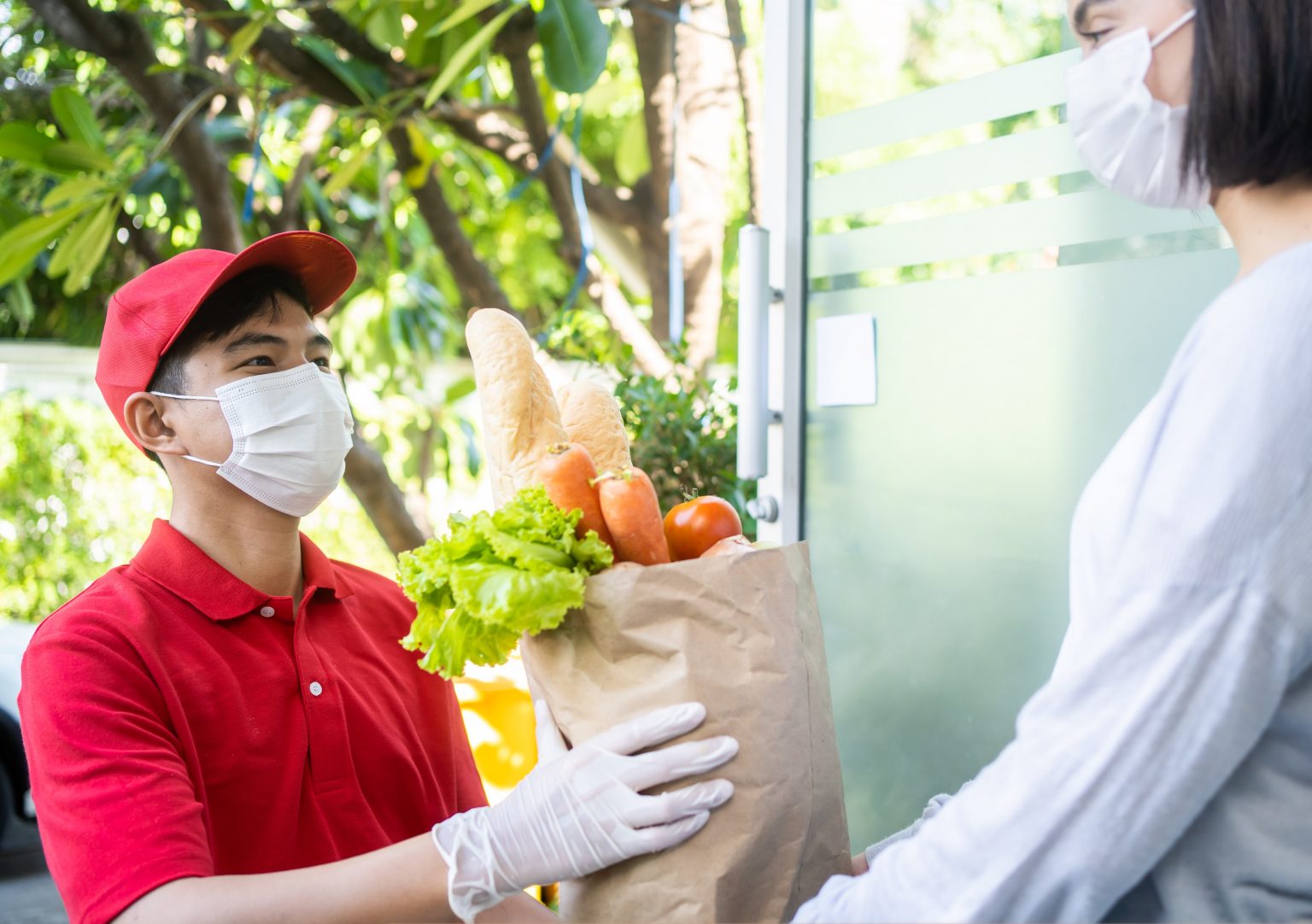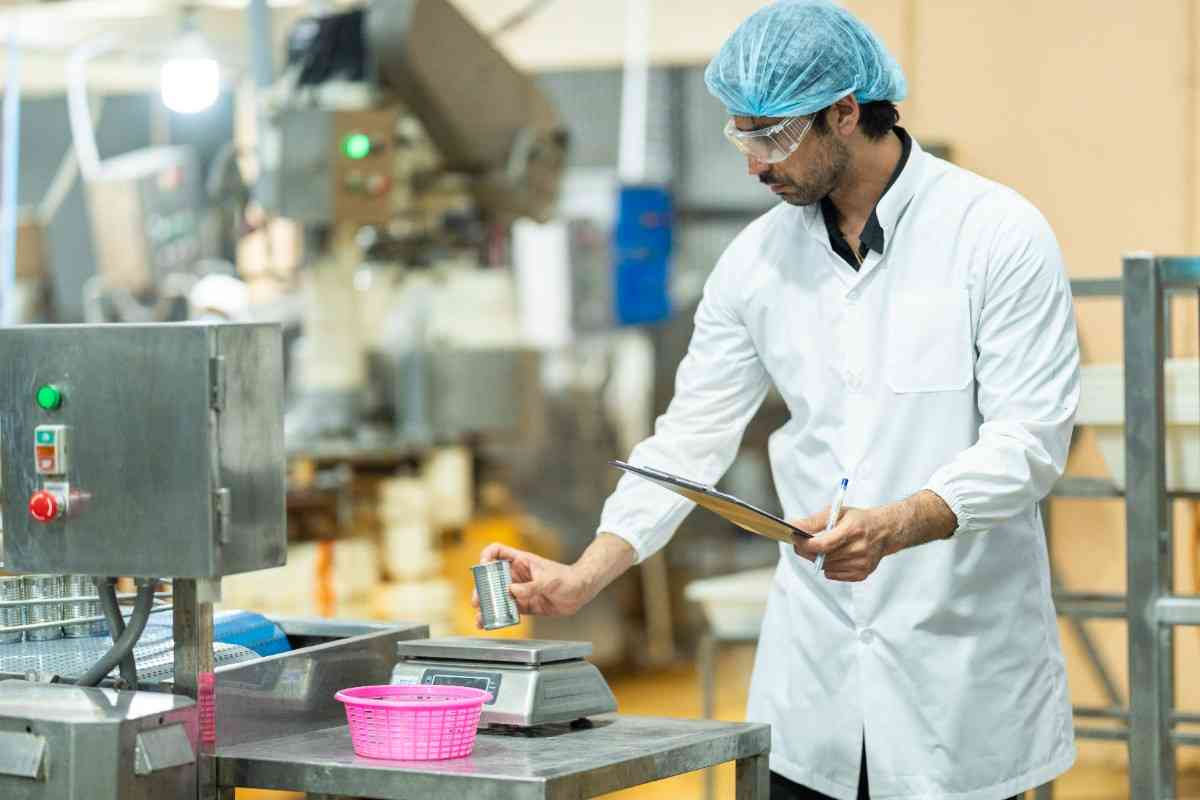Last Updated on November 21, 2025 by Admin
Table of Content |
The convenience and options that the customers are getting in the food and groceries is unparalleled, as the groceries and meals can be ordered anywhere anytime using e-commerce and food delivery apps. Zomato, Swiggy, and Amazon Fresh have been rising in popularity, convenience and a plethora of fast food options, but with such developments comes the responsibility for providing fresh food, quality & safety.
Organizations such as FICSI (Food Industry Capacity & Skill Initiative) expresses concerns regarding the state of food safety practices in fast evolving supply chains, as rapid growth of e-commerce and food delivery services is causing issues of maintaining food safety standards across increasingly complex supply chains. Increasing the importance of strict food safety practices is vital given its implications on consumer protection, prevention of growth hindrance in the industry and expansion of the sector.
Thus, the focus of this article is to discuss food delivery safety and its challenges, opportunities, and FICSI’s issues and efforts.
The Evolving Landscape Of E-commerce & Food Delivery
Though the sector growth is prominent, food quality needs to be catered to as customer do wish to consume fresh food. Additionally, the customers have got different timelines and thus places a constraint on quick food delivery which now forces companies to thoughtfully deal with food supply chain issues.
Factors Driving Growth
- Availability is a factor. Users can be comfortable wherever they are to order something.
- The same demand in the fast-food sector has fostered innovation with lots of meal delivery service companies appearing across potential target markets.
- Technically there is a lot to choose from. Everyone has requirements hence providing a better expansion alternative.
- Time is money for someone. Online orders would help save a lot of time especially to the working community and family as well.
It should not come as a surprise that several concerns arise simultaneously, like the deterioration of food safety culture is a pain point that requires urgent conviction.
Challenges in Food Safety for E-commerce and Delivery
- Complex Supply Chain: E-commerce food systems are comprised of several players such as producers, suppliers, distributors, and delivery agents and each of these players comes in with different risks, be it contamination, temperature deviation, or packaging failure.
- Temperature Controlled Nature of Food Products: Dairy, meat, some frozen foods, and other edibles are heat sensitive, and if exposed to unfriendly heat conditions during the transport, storage, or preparation processes, spoilage and growth of bacteria may occur.
- Transference of Contaminants: There exist channels of dispersion that lead to the contamination of food items; these are during food manufacturing and packaging as well as during distributions such as transporting, delivery, or even retail. Cooking and raw foods in one transport vehicle are some examples where foodborne illnesses can occur
- Time of delivering meals: There are times where the delivery does take far longer than anticipated and this ineffectiveness puts the content of the meal at risk if its ready to use or eaten.
- Low barrier to entry: Online platforms tend to be ‘sellers’ marketplaces’ hence vendors tend to be advertised without any effort been put to their compliance to food safety measures. This absence of uniformity raises the dangers.
Enhancing food safety practices
The Food Industry Capacity and Skill Initiative (FICSI) is a national-level body in India that focuses on enhancing the skills and capacity of the food industry workforce. Its role in improving food safety in e-commerce and food delivery is significant.
Key Objectives of FICSI
- Skill Development: Educate food handlers and delivery workers in food safety best practices.
- Standardization: Initiative to formulate and apply appropriate food safety procedures for e-commerce activities.
- Awareness Programs: Raise awareness of businesses and consumers about food safety anomalies and measures.
- Technological advancement: Foster technologies like IoT and blockchain to improve traceability and quality control.
While focussing on raising skills and implementing standardised practices, FICSI tackles several problems that are peculiar to the food e-commerce ecosystem.
Solutions to Food Safety Challenges
-
Temperature Control Technologies
- Cold Chain Logistics: Maintaining required temperatures for perishable foods through refrigerated trucks and insulated packaging.
- IoT Sensors: Real time temperature monitoring during storage and transportation.
-
Vendor Verification and Training
- Only work with vendors who hold food safety certifications such as HACCP (Hazard Analysis Critical Control Points).
- Hygiene training to all delivery personnel.
-
Quality Packaging
- Use tamper-proof, food-grade packaging to mitigate the risk of contamination.
- Employ biodegradable options to strike a balance between safety and sustainability.
-
Transparency in Supply Chain
- Wherever applicable, traceability of food will help in improving consumer confidence throughout the supply chain by incorporating blockchain technology.
- Remotely examine a vendor’s establishment to check adherence to food safety policies and rules.
-
Consumer Awareness
- Ensure easy to read labels regarding preparation dates, storage methods, and possible allergens.
- Urge clients to call out unsafe activities through easy-to-use feedback tools e.g. calls, pictures.
Also Read: The Role of AI in Revolutionising and Benefiting the Food Industry
Impact of Food Safety on Consumers and Businesses
1. Consumer Health:
Unsafe food is the major factor of foodborne sickness with outbreaks spreading from mild illness to critical health conditions. Ensuring safety does minimize these hazards hence upholding the well-being of the society.
2. Trust and Loyalty:
Online ordering dash users have priority for safety and quality. Regular food safety’s assurance allows platforms to gain users’ trust and encourage their loyalty.
3. Business Reputation:
Negative customer reviews and lawsuits altogether stemming from food safety breaches may result into loss of ROI. The more compliant a company is to safety, the better its brand image and competitive edge.
4. Legal and Regulatory Compliance:
Violation of food safety policies is gravely punishable with high fines and closure of business. Compliance of policies helps avert legal action and sustain smooth running of the business.
Emerging Patterns for Food Safety in the Delivery and E-commerce Environment
To follow the trends in the industry, food hygiene practices will have to change to face new challenges:
1. Cutting Edge Tech
- AI and Predictive Analytics: Spot potential weaknesses in supply chains and avert safety violations.
- Blockchain: Improve tracking and responsibility.
2. Changes in Rules
- FICCI and Governments: Such authorities should expand current food safety legislation to suit the requirements of e-commerce and delivery services.
3. Environmental Management
- Use sustainable materials for packaging and reduce the quantity of food that is thrown out regardless of the safety precautions that are in place.
4. Joint Initiative
- Vendors, consumers, platforms and regulators should combine all their strengths to develop a robust underlying architecture for food safety.
In every transaction, be it E commerce or food delivery, food safety is a shared concern – businesses, regulators, and consumers have a role to play. The importance of initiatives like FICSI in addressing numerous challenges through skill programs, standardization and awareness programs cannot be overstated. As long as innovative technology is adopted, best practices are observed and relevant partnerships are built within the industry, the constituents would be able to assure food safety without compromising the expectations of the consumers. Focusing on safety measures not only shields general health but, in this maturing industry, protects faith and sustainability along with its development.













